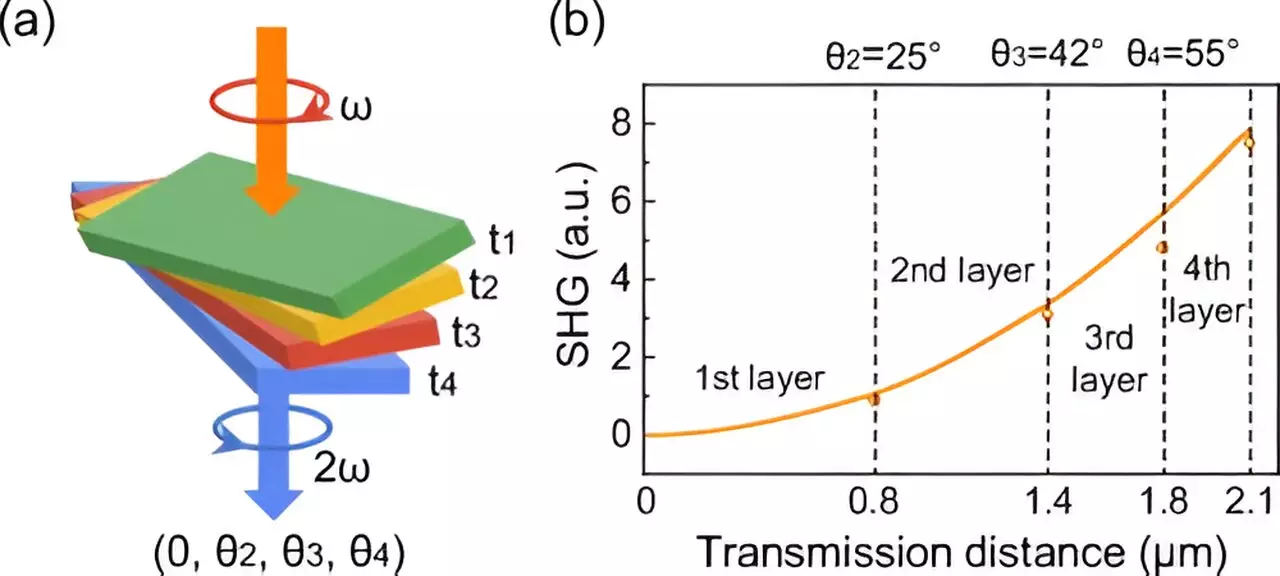A groundbreaking achievement by a team of Chinese researchers has paved the way for next-generation laser technology. Professor Wang Enge from the esteemed School of Physics at Peking University led the team in inventing a revolutionary new type of ultrathin optical crystal called Twist Boron Nitride (TBN). With a micron-level thickness, TBN is currently the thinnest optical crystal known in the world. This astounding innovation has propelled China to the forefront of optical crystal theory and opens up new possibilities for laser devices.
Enhanced Energy Efficiency
Compared to traditional crystals of the same thickness, TBN boasts an energy efficiency that is elevated by a staggering 100 to 10,000 times. This significant advancement promises improved performance and paves the way for the development of laser devices that prioritize miniaturization, high integration, and functionalization. The research findings, shedding light on the groundbreaking work of the Chinese researchers, were recently published in the esteemed journal Physical Review Letters.
For the past six decades, the research and development of optical crystals have been guided by two phase-matching theories proposed by American scientists. However, due to the limitations of traditional theories and material systems, existing crystals have struggled to meet the future requirements of laser device development. In order to realize the potential for new-generation laser technology, breakthroughs in optical crystal theory and materials are imperative.
Under the guidance of Professor Wang Enge and Professor Liu Kaihui, director of the Institute of Condensed Matter and Material Physics at Peking University, the team developed the twist-phase-matching theory. This innovative theory represents the third phase-matching theory based on light-element material systems. By applying the twist mechanism, the direction and pace of the laser’s “marching column of individuals” are highly coordinated, resulting in a substantial improvement in energy conversion efficiency. Professor Liu, also the deputy director of the Interdisciplinary Institute of Light-Element Quantum Materials, stated that this research has not only delivered a new design model and material system but also achieved original innovation spanning from basic optics theory to material science and technology.
Traditional optical crystals can be several millimeters or even centimeters thick. In stark contrast, the TBN crystal created by the Chinese team ranges from 1 to 10 microns in thickness. This significant reduction in size enhances the crystal’s integration potential and proficiency. The team is currently in the process of patenting the TBN production technology in the United States, Britain, Japan, and other countries. Moreover, they have already developed a TBN laser prototype and are collaborating with enterprises to further advance new-generation laser technology.
Professor Wang Enge emphasized the pivotal role of optical crystals in the development of laser technology. The future of laser technology primarily relies on the design theory and production technology of optical crystals. With its ultrathin size, exceptional integration potential, and innovative capabilities, the TBN crystal is expected to uncover new application breakthroughs in quantum light sources, photonic chips, artificial intelligence, and other fields. Wang’s vision echoes the sentiment that this groundbreaking research has the potential to revolutionize the scientific landscape and contribute to society’s advancement as a whole.
The remarkable achievement of the Chinese researchers in inventing the Twist Boron Nitride (TBN) ultrathin optical crystal has marked a significant milestone in laser technology. The profound impact of their innovation cannot be overstated, as it redefines conventional optical crystals and holds enormous potential for various industries and scientific fields. With China at the forefront of optical crystal theory and material science, the path to next-generation laser technology is now illuminated with unprecedented opportunities.


Leave a Reply